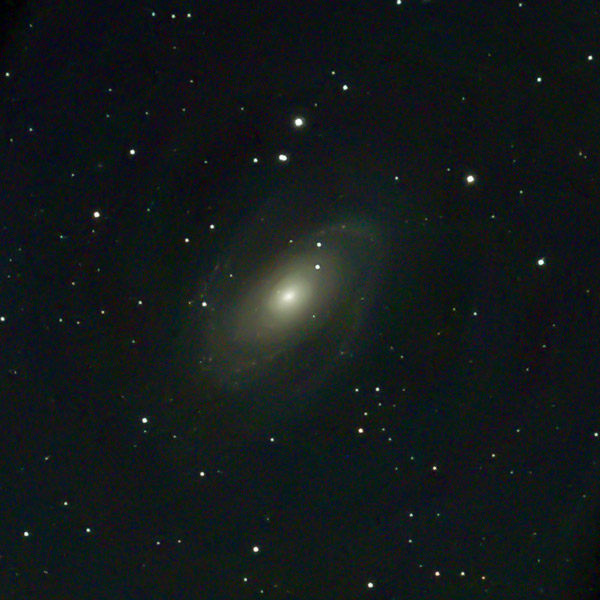Messier 81 is a spiral galaxy in Ursa Major. It’s best viewed in the spring.
Galaxies are often faint and tough to see from suburban skies. However, Bode’s Galaxy is bright enough to see using smaller scopes and is a great object for amateur astronomers starting out in the hobby. Its spiral arms, the bright central bulge, and the surrounding disk of gas and dust are usually easily visible through a small telescope.
The German astronomer Johann Bode discovered the galaxy on December 31, 1774, describing it as a “small nebulous patch.”
My Observations
I first observed Bode’s Galaxy in the telescope in 2020; however, I didn’t sketch the object that night. I took the photo below in April 2020, around the same time I shot the Whirlpool Galaxy for my goddaughter. I plan to resketch this area in the future as Bode’s Galaxy shows up well in my 8-inch scope under suburban skies.


Key Stats
| When to view | Spring | R.A. (2021) | 09h 55m 33.2s |
| Constellation | Ursa Major | Dec (2021) | +69° 3′ 55″[ |
| Visual Magnitude | +6.77 | Distance | 12 million ly |
| Absolute Magnitude | -21.01 | Age | 13.25 billion yrs. |
| Apparent Size | 21 x 11 arcmin | Milky Way Locations | N/A |
| Diameter | 70,000 ly | My Viewing Grade | B+ |
Historical Observations
December 31, 1774 by Johann Elert Bode
“I found through the seven-foot telescope, closely above the head of Ursa Major, east near the star d at its ear, two small nebulous patches separated by about 0.75 degrees, the positions of which relative to the neighbored small stars are shown in the tenth figure. The patch Alpha (M81) appears mostly round and has a dense nucleus in the middle. The other, Beta (M82), on the other hand, is very pale and of elongated shape. I could determine the separation of Alpha to d as 2deg 7′, to Rho as 5deg 2′ and to 2 Sigma as 4deg 32′ with some accuracy; Beta was too faint and disappeared from my eyes as soon as I shifted apart the halves of the objective glass.”1
February 9, 1781 by Charles Messier
“A nebula near the ear of the great Bear [Ursa Major], on the parallel of the star d, of fourth or fifth magnitude: its position was determined from that star. This nebula is a little oval, the center clear, and one can see it well in an ordinary telescope of 3.5 feet.”1
Sources and Notes
Photo of M81 by NASA/ESA and The Hubble Heritage Team (STScI/AURA). Photo is in the public domain because it was created by NASA and ESA.
1Historical observation from messier.seds.org.
Sketch by Wayne McGraw

2 thoughts on “Messier 81 (NGC 3031): Bode’s Galaxy”